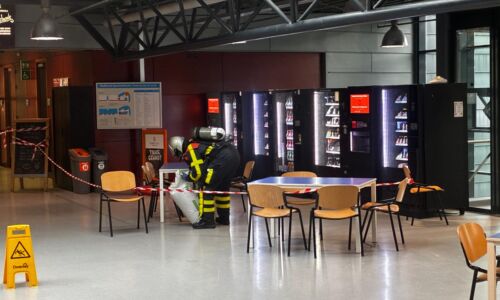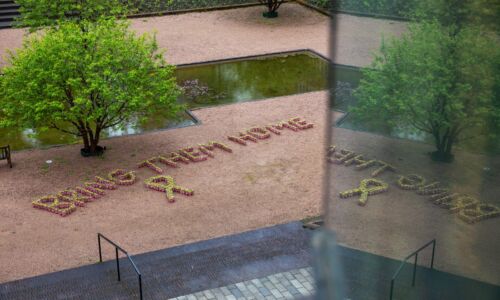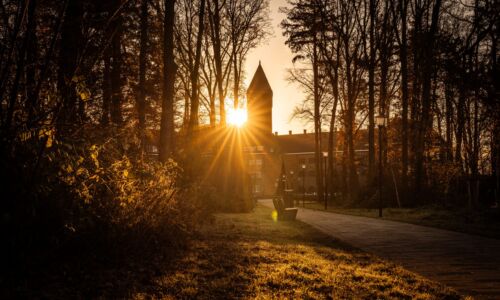Without the university Nijmegen would have been a provincial town on the river Waal
-
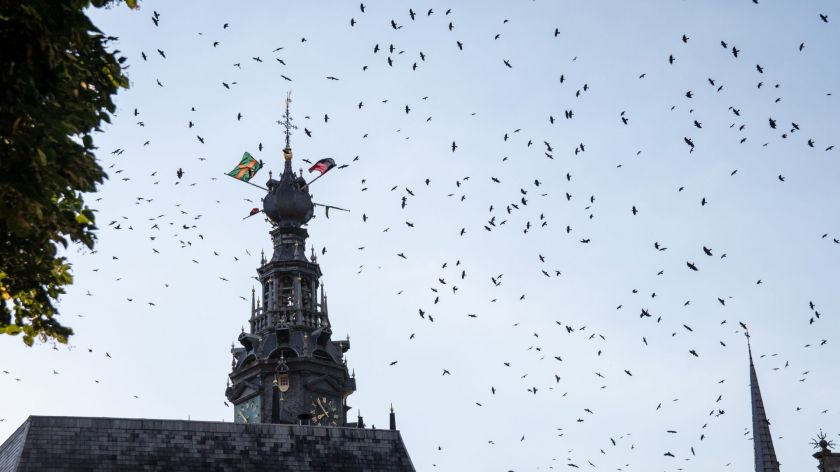 Foto: Rein Wieringa
Foto: Rein Wieringa
Venlo, Deventer, Zutphen: That is the kind of city Nijmegen would have been if the university had not been established here in 1923. There wouldn’t even be one hundred thousand of us 'Nimwegenaren', Lent would still just be a separate village, and the nickname "Havana on the Waal" would never have occurred to anyone.
‘Of course, you never know how a city would have developed over the course of one hundred years without a university,’ says Mayor Hubert Bruls. He starts philosophising out loud. ‘I see a merchant city of some importance, given its location between the Randstad and the German Ruhr area. Transshipment and logistics would have been the key sectors.’
New Vox
This story is part of the new Vox, which can be found on campus this week. In this Vox we dive into the history of the 100-years old university and look towards its future.
The Mayor’s reticence is not surprising. The question of what Nijmegen would have been without one hundred years of Radboud University is a tricky one. After all, the educational institution is inextricably linked to the city, and it has had a major influence on the character of Nijmegen.
It’s easy to make comparisons. ‘I see a kind of Zutphen,’ says Professor by Special Appointment of Gelderland History Dolly Verhoeven. ‘Or maybe a city that was formerly in Gederland, such as Venlo, because of its size and location next to a river.’ Other interviewees also come up with comparisons: Harderwijk, Deventer, Ede, Zwolle. A provincial town on the river Waal, in other words.
‘You can think away the entire periphery of the city’
Professor Emeritus, sociologist and public administrator Nico Nelissen tackles the question differently. On the table at which he sits, he draws an imaginary map of the city. ‘If you take a jigsaw puzzle of the map of Nijmegen, I can take away pieces here and there that only exist thanks to the university,’ says Nelissen. With his hand, he picks up some of these imaginary pieces off the table. ‘Let’s undo this puzzle!’
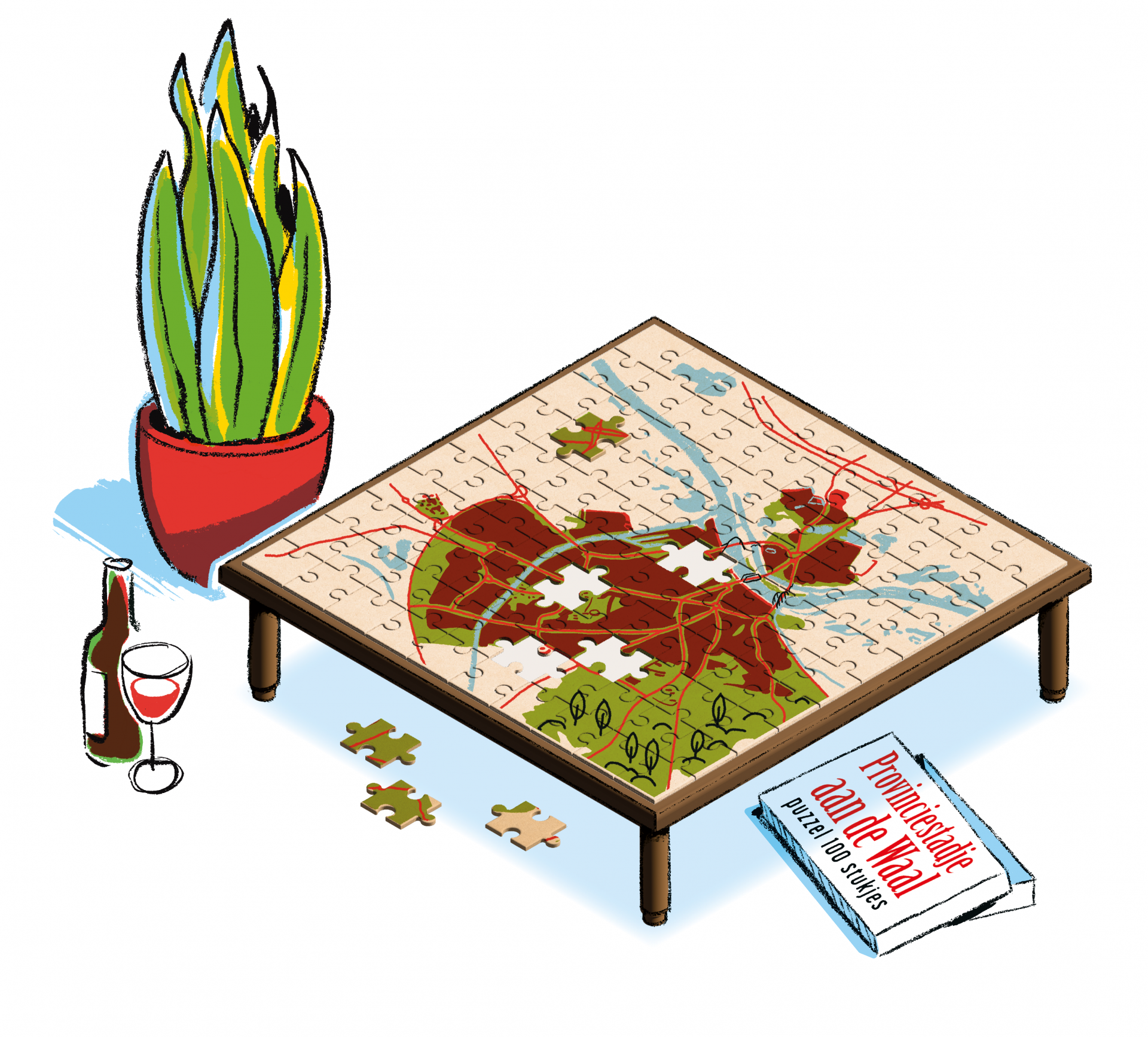
Puzzle piece 1: The city limits
Nijmegen would for sure have had far fewer inhabitants. There are currently over 183,000 Nimwegenaren. According to Nelissen, that number could be roughly halved without a university. ‘The Waalsprong would have been completely unnecessary. In fact, Dukenburg and Lindenholt would probably not have been built either. Nijmegen would have remained on the east side of the Maas-Waal canal. You can think away the entire periphery of the city. And what about the surrounding villages? Malden would not have been nearly as big.’
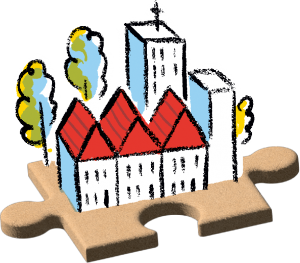
By extension, the demography of Nijmegen would also have looked very different. With far fewer young adults in the city, far fewer student houses would be needed. Nijmegen is home to approximately 45,000 students, the vast majority of whom rent rooms in the city.
Nelissen points to the many SSH& complexes. Well-known locations like Hoogeveldt or Jacob Canisstraat would not have been there. But we can also take away Talia’s immense residential tower that dominates the skyline near the railway station. And then there are the many smaller complexes and student houses rented out by SSH&. The demographic composition of Nijmegen-Oost, home to thousands of students and recent graduates, would also be completely different. While Oost now has many student houses, those houses would not have been split into rooms then on such a massive scale.
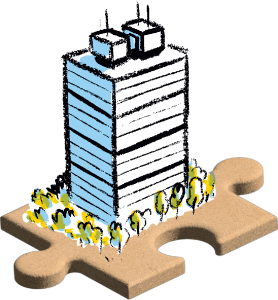
Puzzle piece 2: The physical campus
An obvious one, but still important to mention: the campus would not have been there either, of course. Nelissen starts daydreaming. ‘The Heyendaal estate as part of one large green strip from the Goffertpark to the Mariënbosch. That’s what it would have looked like, were it not for the fact that the medical faculty settled on the estate in 1951, with other faculties soon following suit. Erasmus Tower is now an integral part of the campus.’
Not only can you erase the university buildings, but also all kinds of businesses and agencies in the area. No Max Planck Institute. No HAN University of Applied Sciences, which settled in the university’s shadow. No Technovium, on the other side of the rail tracks. And no Heyendaal railway station. Without thousands of commuters using the Maaslijn every day, the station would have been redundant.
Puzzle piece 3: Business
Thanks to the university’s presence, business is also flourishing in Nijmegen. Without the university, the tertiary sector, i.e. the service sector, would have been much smaller, says Nelissen. There would have been thousands fewer jobs in the area. Through the university, knowledge flows into the city, Nelissen explains. ‘It’s attractive for companies to settle in Nijmegen because of the outflow of university-educated staff that remain in the region. Think of the Noviotech Campus near the Goffert – or the Science Park on the campus itself. They’re taking full advantage of this.’
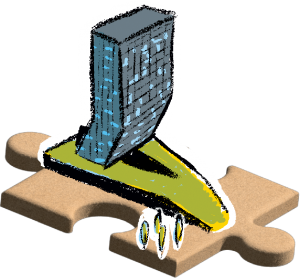
President of the Executive Board Daniël Wigboldus underlines the importance of economic activity in the city and wider region. He mentions the many spin-offs from Radboud University research. ‘There are now dozens of companies based in the region, accounting for seven thousand direct employees.’ Examples include Novolearning (language courses), pharma company Byondic, and SNP Natuurreizen. ‘All this activity naturally attracts new young people to the city.’
And it’s not only direct jobs that are created in this way, adds social geographer Peter Vaessen. ‘The more students and employees there are in the city, the more people end up joining various boards and voluntary organisations, which benefits everyone. This also makes for an attractive cultural and living environment.’
Puzzle piece 4: The hospitality and culture sector
A vibrant nightlife without a university? Forget it. Former Radboud University student Simon Mamahit works behind the scenes at various music organisations and mentors young people in the Nijmegen music scene. He himself lives in the Molenstraat. ‘Every night there’s a coming and going of young people partying, living, dancing, and arguing. Without a university, the hospitality sector, with all its student cafés, would really have been much smaller.’

And what about the cultural sector? Many venues and institutions would not have existed without the university. Nelissen makes a list: ‘No LUX, no literary organisations like De Wintertuin, and Museum Het Valkhof probably wouldn’t have been there either. Also, no social debates at Radboud Reflects.’
Many graduates from cultural programmes end up in policy positions at cultural institutions, says Mamahit. ‘Not to mention the fact that students are keen consumers. Pop venues Doornroosje and Merleyn organise lots of parties that are incredibly popular among students,’ says Mamahit. The same is true of the NYMA site near the Oversteek, home to event venues De Vasim and Strandbar Stek, among others.
Puzzle piece 5: The political climate
Who hasn’t heard of the much cherished nickname ‘Havana on the Waal’? A left-progressive wind has been blowing in Nijmegen for many years. This red character and nickname would not have existed without the university. ‘The city’s leftist image has its roots in the student protests of the 1960s and 1970s,’ says historian Verhoeven. ‘That’s where the rebellious and youthful image of the city was born. This in turn attracts people who have an affinity for such topics.’

This political wind is partly due to the university: in exit polls at polling stations on campus, left wing parties such as GroenLinks and D66 are consistently the largest parties. Other progressive parties, such as PvdA and Partij voor de Dieren are also doing well – and Volt has attracted a remarkable number of votes on campus in recent years.
Puzzle piece 6: Healthcare
With three hospitals – Radboudumc, CWZ, and the Sint Maartenskliniek – there is much to choose from in Nijmegen when it comes to healthcare. What is the connection with the university? ‘The Radboudumc is obvious,’ says Nelissen. ‘Without a Faculty of Medicine, you wouldn’t have had an academic hospital next door,’ he says.
Whether the Maartenskliniek would also have been located in Nijmegen remains to be seen. The rehabilitation care now taking place there could also have been located in a place like Arnhem, where the necessary health and rehabilitation care can be found at Rijnstate and Klimmendaal. The CWZ would most probably have been there, although, according to Nelissen, it would possibly have been smaller and less specialised.

However, this piece of the puzzle cannot simply be removed from the Nijmegen map, because the connection with the university is not as obvious as with the other pieces. ‘Perhaps without the university, Nijmegen would have made a name for itself as a healthcare city,’ Verhoeven thinks aloud. As an example, she recalls that Nijmegen already tried once to put itself on the map as this kind of city in 2007 – without success. ‘The CWZ is a big regional hospital anyway. Who knows, maybe without Radboud university medical center, it would have been even more important for the wider region.’
‘The university benefits some groups more than others’
Battered town
With so many holes in the puzzle, it is clear that we are left with a battered town. Over the past century, Radboud University has been pivotal in creating the complete Nijmegen as we know it today.
And yet, we must not overestimate the value of this kind of higher education institution. ‘The university benefits some groups in the city more than others,’ concludes Mayor Bruls. Nelissen speaks of an ‘island that those who don’t need to be on campus experience as a fenced-in area’. President of the Executive Board Wigboldus even talks about a ‘gap in society’.
And everyone agrees that this has to change. That gap must be closed. ‘Researchers need to go into the city. To visit people in community centres,’ says Bruls. Historian Verhoeven agrees wholeheartedly. ‘Every faculty can add value to the city with its knowledge.’ She cites the research studies conducted for several years now by Radboudumc among Four Days Marches participants. ‘It’s a good example of how you can keep research in the region that benefits a wide audience.’ She suggests the idea of holding annual city lectures, throughout Nijmegen. ‘In this way, we can activate neighbourhoods where the university doesn’t normally come easily, and we can develop initiatives that benefit the whole city.’
Misunderstanding and polarisation
This is music to Mamahit’s ears. Among the young people he works with every day, he sees that the divide is growing. ‘The university is seen as something far away from them. That’s a shame. It’s precisely in today’s society, where misunderstanding and polarisation are the order of the day, that the university must assume its responsibilities. As a research institute, you can’t afford to sit in your ivory tower and have discussions just among scientists, instead, you must engage in discussions with “ordinary people”.’
‘You shouldn’t talk about people, but with people’
As an example, he cites Radboud Reflects. ‘They organise incredibly interesting debates, but the subject matter is far too lofty for people without a university degree. You shouldn’t talk about people, but with people.’
Back to the jigsaw puzzle of Nijmegen, through which the Waal and the Maas-Waal canal meander like attractive blue strings. If all the plans to bring the city and the university closer together work out, how will it affect Nelissen’s puzzle? How many pieces will have to be taken away if we play this game again at Radboud University’s 150th anniversary?
A smile appears on the Professor Emeritus’ face. ‘Then we would have to take away so many pieces, that there will be nothing left of the puzzle.’

